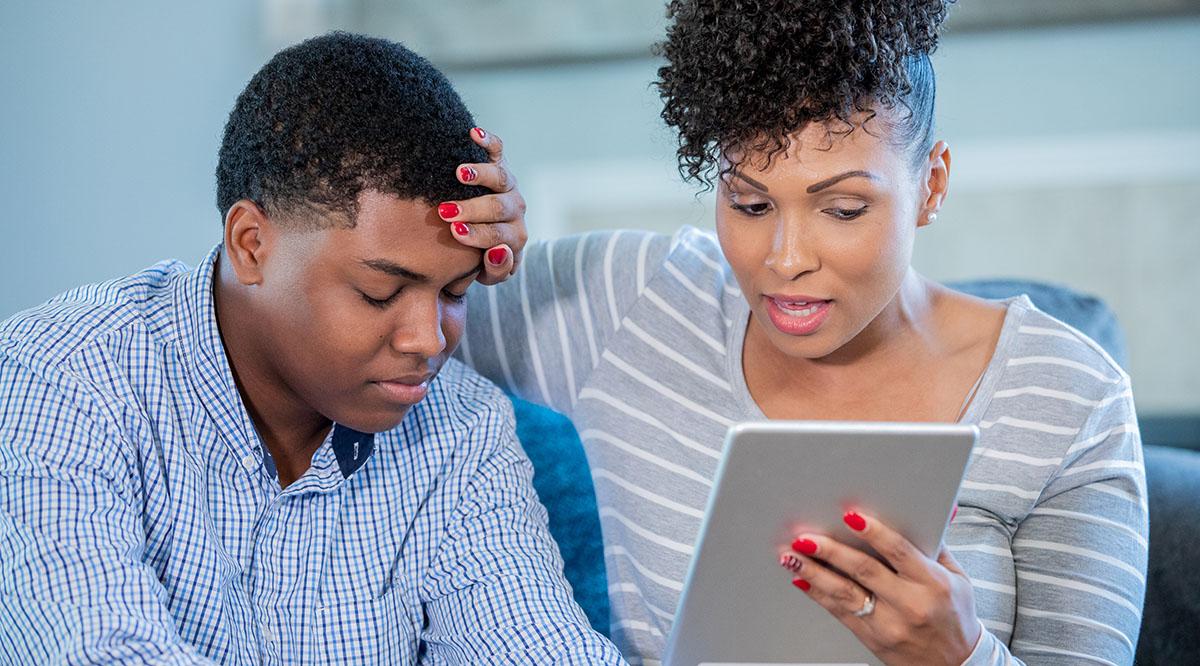Editor’s note: The opinions expressed by the authors do not necessarily reflect the opinions of the AAMC or its members.
Since the onset of the COVID-19 pandemic in the United States, telemedicine video visits have surged. When primary care offices closed and patients stayed at home to prevent the spread of the novel coronavirus, new opportunities opened to deliver remote care. While neither providers nor patients were wholly prepared for the new steps in this delicate dance of clinical medicine, the benefits of telemedicine became evident almost immediately.
Indeed, our work at two academic medical centers now provides a daily reminder of how telemedicine can enhance the care we provide our patients. Through our work in an urgent care facility in the Bay Area and a primary care clinic in Birmingham, Alabama, we use virtual visits to triage patients for COVID-19, thus sparing patients and providers from potential exposure. Telemedicine also has removed some barriers to care, for instance with patients who previously had difficulty getting to the clinic for in-person visits. For providers, video visits have sharpened our observational and diagnostic skills — and helped strengthen the patient-provider relationship.
But it took a pandemic to get here.
A 2018 study by the Urgent Care Association found that just 8% of urgent care centers used telemedicine technology. Within one month of the first reported case of COVID-19 in California, Stanford Primary Care converted more than 75% of in-person visits to virtual visits. At one primary care office at the University of Alabama at Birmingham, no patient had a telemedicine visit during the first week of March; by month’s end, more than 97% of visits were conducted by phone or video.
Video visits appeal to both patients and providers. For patients, telemedicine offers convenience for those working from home, juggling child care, or assisting with elder care. Telemedicine can also support the health of essential workers. When an allied health student working his way through school found his job had put him on the front lines of the pandemic, little time remained to schedule a primary care follow-up appointment. Yet, his own medicines still needed to be refilled. Using a telemedicine visit allowed him to take the call in the safe space of a workroom before returning to his own work.
For providers, telemedicine allows for remote assessments of acute medical needs, giving an enhanced level of safety for both physician and patient.
As we carefully examine a patient’s acute or chronic medical concerns via video visits, we remember the importance of active listening and keen observational skills.
The use of video telemedicine should outlast this outbreak. According to the Centers for Disease Control and Prevention, over 54% of Americans visit a primary care office each year, and 20% go to urgent care annually for chronic conditions like diabetes and hypertension or acute concerns such as cough, back pain, rashes, headache, and joint pains.
Medical training taught us the fundamental skills of assessment by touch. Decades in practice have taught us the practical use of X-rays and labs to round out the information. Many of our patients expect this data. How, then, can telemedicine offer a virtual surrogate for a physical examination?
This pandemic has reinforced how interdependent our relationship is with our patients. In telemedicine, that partnership is realized in the provider-assisted patient self-exam. Medical school and postgraduate training do not yet require lessons in telemedicine skills. But our training and our careers have honed our skills of clinical observation.
During a video visit, we uncover clues in clinical assessment when we are invited into a patient’s home or workplace. One of our patients had trouble making her in-person appointments. She lived far from the clinic and relied on others for transportation. When she did arrive, it was often after her appointment time, making the visits feel rushed. She also often forgot to bring her medications with her. During her first telemedicine appointment, she sat smiling on her living room couch, her daughter at her side, her grandson playing nearby. In an unhurried environment, we reconciled her medications and reviewed her health in detail. Telemedicine allows patients to host physicians in their home, and both parties can benefit.
Direct observation also provides information on nutrition and on breathing. Patient self-exams localize pain and swelling. In these visits, our patients are our hands. We ask them to count out a pulse or press on a tender joint. When we partner in step with them during this remote encounter, allowing them to lead, we strengthen the provider-patient relationship.
Providers can feel exposed when stepping away from the familiar glow of a computer terminal showing lab or radiology results. But when we engage in video telemedicine, we enhance our ability to carefully listen to our patients’ medical stories. We find clues that might lead to a diagnosis, symptoms that might lead to reassurance, or guidance.
Before the pandemic, many medical providers considered the physical exam a lost art. It is easier to click a mouse and view a test than step through the looking glass of intimacy that video visits invite. Many clinicians feel more comfortable interpreting blood tests than conducting bedside evaluations. But as we carefully examine a patient’s acute or chronic medical concerns via video visits, we remember the importance of active listening and keen observational skills. A paradox of this pandemic is that video visits might be the best way to get clinicians back to the patient’s bedside.


